INTRODUCTION
The Indian Navy’s Maritime Security Strategy document 2015 (titled ‘Ensuring Secure Seas: Indian Maritime Security Strategy’) is a precursor of India’s evolving maritime strategic thought and its proposed force posture. Together, they form important spokes in the wheel of New Delhi’s politico-military strategy (or Grand Strategy). Second, the document envisages India adopting a strategy of having a carrier task force as a mobile base, together with sea-based nuclear deterrence. An extension of such an arrangement would involve the Navy’s vision of developing itself as an expeditionary force, which would eventually help India to attain its desired status as a major power in the Indo-Pacific region.

This article is by our guest author Mr Balaji Chandramohan, Visiting Fellow with Future Directions International, Perth .
Analysis
The Maritime Security Strategy 2015 was made public in January this year, before the International Fleet Review in Visakhapatnam. It signalled both the subtle importance of the document itself and also placed naval strategy as a subset of India’s maritime strategy. In a way, this was a shift from the 2007 strategy document, ‘Freedom to Use the Seas: India’s Maritime Military Strategy’. The earlier document focussed predominantly on maritime strategic aspects, including their military dimension, though not explicitly on naval strategy. That subtle shift is important when we consider that earlier versions of the Indian Navy’s publications focussed on diplomatic aspects of the maritime strategy, including naval diplomacy. The security strategy document, however, has focussed more on the hard power aspects, in an effort to signal a robust posture to both its adversaries and allies.

Maritime Strategic Orientation, Geopolitical Perspective and Force Structure
The Ensuring Secure Seas document stresses the importance of controlling both the Sea Lines of Communication and the chokepoints as a part of India’s maritime strategy. This is despite the fact that, to date, India’s politico-military orientation, especially its maritime policy, has predominantly been focussed on expanding its reach in the Indo-Pacific and Asia-Pacific regions (including the western theatre of the Indian Ocean); that expansion, of course, increasing the importance of the Sea Lines of Communication.

The proposed variation of this policy to give greater importance to the chokepoints and Sea Lines of Communication reflects the innate variety in India’s maritime strategic thinking, between its geo-political perspective and its external geo-strategic orientation. It also affects India’s maritime force posture internally, including the Navy’s co-operation with the other two services; for example, in acquiring external bases as a part of controlling the Sea Lines of Communication. This also involves, of course, diplomatic manoeuvring with countries such as the United States, Australia, France, Japan and Indonesia, each of which has its own maritime military presence in the Indo-Pacific or wider Asia-Pacific regions.


The proposed variation in approach is important, as the politico-military orientation of India’s Grand Strategy seems to encompass the whole of the Asia-Pacific region as a part of its geo-political perspective. The Indo-Pacific region is included as a subset of the proposed maritime geo-strategic orientation, in line with India’s perceived continental commitments. The idea of having the Indo-Pacific as a part of India’s maritime geo-strategic orientation involves two separate requirements: the need for control of the chokepoints and the necessity of securing command of the sea; together, these would help to achieve the major requirement of keeping the Sea Lines of Communication open.

On that note, we understand that, unlike the Pacific or the Atlantic Oceans, the Indian Ocean is predominantly controlled by maritime powers which have command of the chokepoints. In that context, the Indian maritime security strategy document has identified nine important choke points as a part of India’s maritime security strategy perspective in the Indian Ocean:
- The Suez Canal
- The Strait of Hormuz
- Bab el-Mandeb
- The Mozambique Channel
- The Cape of Good Hope
- The Straits of Malacca and Singapore
- The Sunda Strait
- The Lombok Strait
- the Ombai and Wetar Straits.
The nine chokepoints are divided into five in the western Indian Ocean and four in the eastern, with the force structure of the Eastern Fleet getting the greater level of attention.
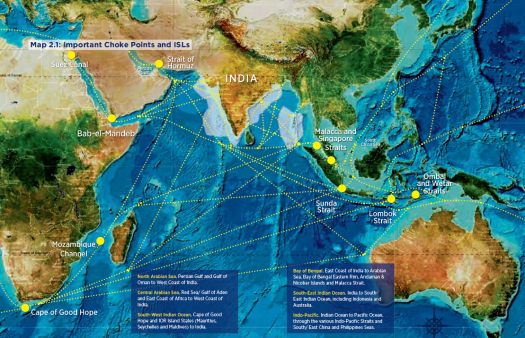
On the other hand, when it comes to Sea Lines of Communication, the greater importance is given to the broader Indo-Pacific region (including both the western and eastern theatres of the Indian Ocean), which reflects the geo-political perspective of identifying the primary and secondary areas of interest in India’s overall maritime strategy.
The dual methodology proposed to both secure the chokepoints and gain command of the sea, is interesting and one of the important variations in India’s maritime strategic orientation. Unlike China’s island chain strategy of having a permanent blue-water presence in the whole of the Asia-Pacific as a part of its maritime disposition, India’s planning seems to envisage having command of the sea in the Indo-Pacific, with a sub-policy of controlling the identified chokepoints. This would enable India to co-operate with other maritime powers in the Asia-Pacific as an overall part of its maritime strategic orientation. One similarity with China’s planning will involve the acquisition or use of overseas naval bases, first in the Indo-Pacific and then expanded to the whole of the Asia-Pacific region.
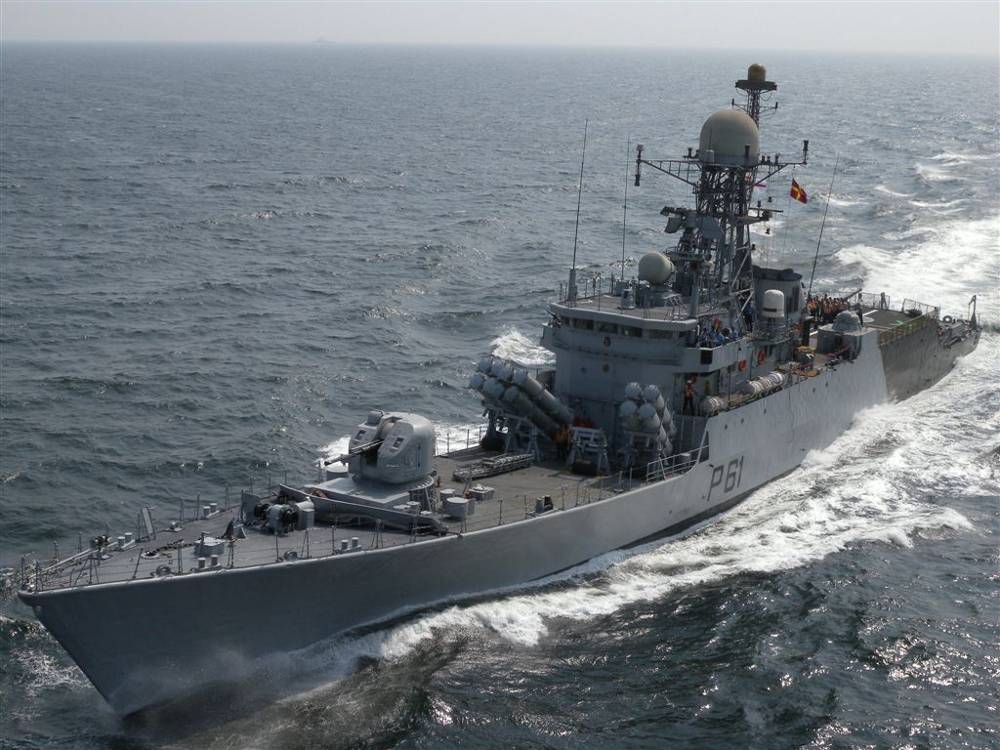
The above position could also be altered if India eventually upgrades its facilities on the strategically-located Andaman and Nicobar Islands and integrates the forces there as a part of its strategic fleet operations. This would reduce India’s need to expand its navy, by increasing the number of available vessels by roughly 40 per cent, from 137 to about 200. By 2027, re-orientation towards a three-fleet blue-water navy with flexible command will be the way forward.

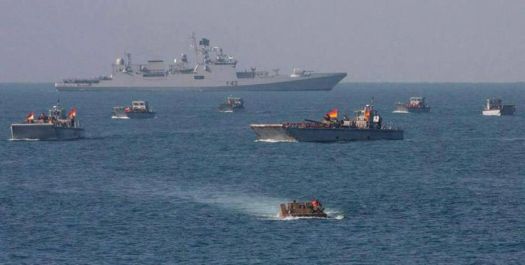

Making that change as a stop-gap arrangement, before India embarks on a three-fleet navy, would greatly increase the range and scope of its existing naval command infrastructure based in the Andamans and Nicobars, which, at present, is the face of India’s engagement with South-East Asia. It would provide greater scope for increasing India’s maritime engagement, using a flexible command option to reach across South-East Asia to the South-West Pacific and, possibly, beyond. So far, India has no permanent military presence in the Pacific, but this could change in the next five years to at least include the South-West Pacific.

In the South Pacific, India will increase its maritime engagement diplomatically, which may extend to having a military presence in one of the Pacific Island countries, probably in Fiji. This would not contradict India’s subtle mixing of its maritime strategy with its politico-military vision of joining an explicitly maritime alliance with those countries wary of Beijing’s maritime expansion, especially towards the “Second Island Chain” running south from Japan to West Papua. On the other hand, India’s efforts towards maritime expansion in the North Pacific may complicate its continental commitments.
.jpg)
To be sure, the above arrangement would enable the Eastern Fleet to undertake both tasks of sea-denial and sea control, with the power-projection and command of the sea resting with the Andaman and Nicobar command. Further, to help achieve favourable fleet operations and sustainable command of the sea, India would need to acquire bases, or access to bases, in the western Indian Ocean, such as in the Seychelles. It will also need to convert its present naval outpost in Lakshadweep into a fully-fledged operational base, with capability for power-projection, sea-denial and command of the sea, especially in relation to Pakistan.

Increased pressure on its eastern seaboard, however, will push India towards such an arrangement with other countries in South-East Asia and, perhaps, beyond to the South-West Pacific. Such an arrangement – if it were to eventuate – would include a ring of bases around the Indian Ocean, from the Cape of Good Hope to Mozambique, up to Mombasa and across to the Maldives, Trincomalee and Penang. If India had to further increase its operational reach, it might then extend the eastern and western chokepoints of the Indian Ocean and maybe even reach towards the islands of the South-West Pacific.
In that context, the Indian Navy has started operating its largest naval base in Karwar, which will help to secure command of its western Indian Ocean seaboard and the Indo-Pacific region more generally. The addition of the aircraft carrier INS Vikramaditya and over 30 support ships to that naval base, means that India is concentrating both on expanding its reach in the eastern part of the Indian Ocean and also doing the required work to get command of the sea and the capability for sea-denial and seaborne strikes against Pakistan in the western Indian Ocean.

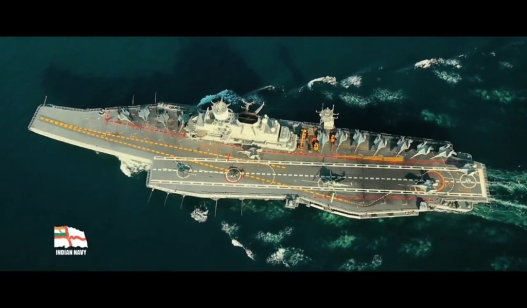
India’s strategy for the Indo-Pacific region is therefore different to the pivot approach of the US, for instance, but it does envisage co-operation with the pivot strategy in the eastern part of the Indian Ocean, with a view to checking an increase in the ambitions of the Pakistani Navy. Overall, this strategy may involve having a permanent blue-water naval presence in both the western and eastern theatres of the Indian Ocean. Such a strategy may involve India co-operating with other countries which have military assets in the Indian Ocean, such as Australia, Indonesia, Iran, France and the United Kingdom. This would require more port visits and co-operation on the high seas.
On the other hand, the strategy document stresses the importance of force projection as a part of controlling the Sea Lines of Communication, which we understand will be achieved through the deployment of aircraft carriers. India’s ultimate ambition will be eventually to establish a five-carrier fleet, comprising a mix of large and small carriers, doing full justice to its power-projection capabilities. For example, India plans to deploy the locally-built aircraft carrier INS Vishal as a part of the power-projection capabilities envisaged in the security strategy document.
Four other basic issues were identified in the document as a part of its force projection policy: Maritime Manoeuvre, Maritime Strike, SLOC interdiction and amphibious operations.

Interestingly, the security strategy document also mentioned the importance of sea control and sea denial as a part of operational requirements. We understand that, predominantly, the sea control and sea denial strategies are variations of the Alfred Thayer Mahan and Julian Corbett theories of maritime strategy. Further, as envisaged by the document, as a part of seeking to gain sea control, co-ordinated efforts will be made in conjunction with the other services. This reflects, in part, India’s maritime strategic thinking, which requires maritime preponderance for overall military operations.


India’s maritime sea denial is predominantly oriented towards the importance of denying China’s South China Sea Fleet an operational domain in the Indian Ocean. Sea control strategy is oriented towards establishing the Indian Navy’s maritime predominance in the Indo-Pacific region and beyond in conjunction with a range of countries, including Indonesia, Australia, Vietnam and the United States.
Maritime Strategy and Nuclear Deterrence
As India has a credible minimum deterrence and a no-first use policy as the two central principles of its nuclear policy, its maritime imperative, as set out in the maritime security strategy document, is interesting. Here, the greatest importance is given to submarines carrying ballistic missiles (SSBNs) as a part of credible nuclear deterrence against its nuclear-armed rivals, Pakistan and China.

Sea-based nuclear deterrence is one of the important tenets of the 2015 maritime security strategy document and a variation from the 2007 document. INS Arihant (now fully operational) and INS Aridhaman will provide the effective nuclear deterrence for such an arrangement. A further ambitious project will include developing six new fleets of nuclear submarines. A force level of three to five SSBNs, six nuclear-powered attack submarines (SSNs) and 20 diesel-electric submarines (SSKs) is required for the Indian Navy to fulfil its mandate of achieving an effective blue-water navy. If the nuclear submarines provide the resources for sea-denial and sea-attack options, then increasing the force of aircraft carriers would further improve India’s capability to achieve command of the sea and control of the chokepoints.

Internally, the ambitious posture of the Indian Navy, with its undersea nuclear deterrence capability, means that it serves as a tool to allow the other two services to re-arrange their existing command structures, including the Strategic Forces Command, in an effort to collectively present a credible level of nuclear deterrence vis-a-vis both Pakistan and China. Importantly, as highlighted in the security strategy document, the stature of the Indian Navy has risen, especially since the introduction of its nuclear submarine capability. This provides an essential element in the structuring of forces against continental and maritime threats from both Pakistan and China.
In conclusion, the Ensuring Secure Seas maritime security strategy signals an important paradigm in India’s maritime thinking. The central focus is on improving its strategic outreach in the Asia-Pacific region, while also securing its maritime flank in the Indo-Pacific region. This would be done in co-operation with other maritime powers, so sharing collectively in their efforts to keep the Sea Lines of Communication open.
This article was originally published as a research paper by the author for Future Directions International (FDI).
Edited by N.R.P
If you enjoyed reading this article, do rate it below.
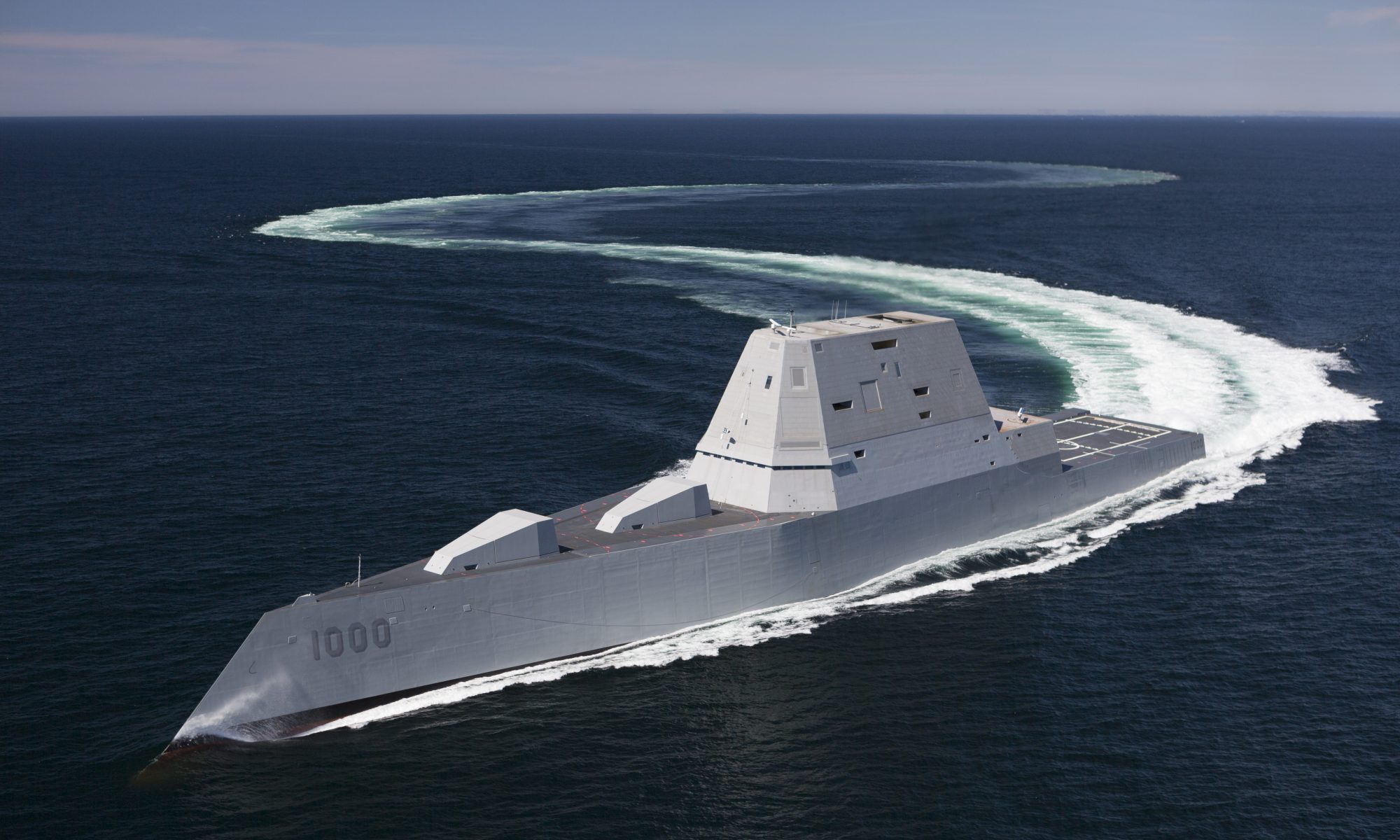

it covers important part of naval strategy.
LikeLike
As always a pleasur truly to read a very good article. Keep up the good work
LikeLiked by 1 person
Thank you
LikeLike
Very good analysis. I am impressed. My long wait ends here. Thank you.
LikeLiked by 1 person
Thank you
LikeLike
Great one… Btw the websites ui is a bit complicated for new users and we are not able to see the latest articles on the main page. I saw this article only after pressing the thumbnail on top right corner of the page. The latest articles and tab main page is not showing the updates and so are the categories. Please look into it
LikeLike
Hi Mukesh. Thank you for noticing this and bringing it to my attention. I have made the necessary changes so that the categories tab is up to date. The main page will be updated soon.
LikeLike
The article pretty much covers everything. Just it does not take into consideration the number of ships currently india has and the time taken to achieve the full strength as required to achieve all its objective.
LikeLiked by 1 person
After Arihant and Aridhaman, how many more SSBNs is India planning to built? Will they be bigger?
LikeLike
Maybe 4-5. They could be bigger.
LikeLike
Good article
LikeLike
Sir, you are writing great articles…
It would be nice if you write an article on marine propulsion & gas turbines…
LikeLiked by 1 person
I have been thinking about it from a long time. Will Surely Do So.
LikeLiked by 1 person
Omg again a virtually spot on article.
However here are my 2 cents regarding India’s navy and its current development phase.
Years of mismanagement and bureaucratic dysfunction trough the entire military R&D and supply/ maintenance & logistic chain did leave India in a very fragile situation.
Yes it does have the force and everything it needs to be a major power yet specially the navy is in a very bad shape. Critical capabilities, like deep water ASW is virtually NOT adequate and fruitless costly indigenous design efforts do not make the situation any better.
On top of that most of India’s (sub) and surface assets are outdated and have little to no value in a conflict with potential adversaries like Pakistan and for example China. Most of India’s supporting assets for a A2D2 strategy just are not up to date, not synchronized across the 3 military branches (Air,Sea and Land) With that being said the military apparatus is still largely ineffective and in some cases corrupt and dysfunctional despite the huge effort by the government and military command to clean the house and solve these issues.
India would imo do better for the time being to rely on foreign (Of the shelve) hardware, systems and training. Because right now India does have a rather large army and on paper it does seem to have a fair bit of capability yet that all paper work. Some of the Indian hardware however does have a future and still enough lifetime & room for upgrades and research left to be effective.
India has a rotten dysfunctional and inefficient military business model yet it does have a relative good level of professionalism competence, accountability and responsibility this is however NOT the case with navy (R&D,Supply, Logistic and maintenance) authority, leadership and management since for example the navy is NOT allowed to maintain its hardware without a written signed and months debated letter. Causing huge delay’s and other issues.
Now i am not going to go much deeper into that since it would go off-topic at best and i assume that most of you do understand what i am talking about since most is public knowledge and widely accepted as one of those huge challenges India faces.
So in order to restructure the the military and to rid itself of old equipment and the above issues, while keeping taps on India’s economic ability to generate the huge amount of budget needed, to be able to see their ambitions come to life.
So while this article written by N.R.P is pretty much spot on i would suggest that India would be better suited to obtain proven designs from lets say EU or even US companies considering that everything needed to deploy and maintain such new equipment is already in place and would make a transition from a paper tiger into a true tiger much smoother while allowing India to obtain the much needed deterrence both conventional as unconventional.
It also allows India to obtain the right knowhow and expertise & experience to allow true indigenous design efforts rather then failed and costly projects.
With that being said India needs to step up its A2D2 strategy and infrastructure, since this will be pretty much the only thing the Chinese will fear from a navy point of view and to a large degree also from a air-force point of view. It really does need its political, economic, informational and military to work in tandem and harmony and as such reinventing the whole structure is only going to bog down a total military overhaul, so why not adopt proven “R&D,Supply, Logistic and maintenance and so on”
Just my 2 cents and even it was a bit off-topic i was thinking to highlight some of the less visible issues of the Indian Navy.
Regards Nico
LikeLike
Thanks for your detailed comment Nico. You put some valid points across. By the way, this particular article is by our guest author Mr Balaji Chandramohan as mentioned in the introduction itself . Credits to him for the great analysis 🙂
Regarding the capabilities of India’s surface and sub surface assets. I think they are on par with the best in the world in terms of capability. The ships are designed and built locally for Indian requirements and have excellent weapons and sensors. They are decades ahead of what Pakistan has and are enough to handle China in Indian waters. And the Indian navy has its indigenization program which is well underway. All ships are being built locally itself with the best available technology.
I do agree with what you say about the Indian procurement issues. There is a lot of delay and red tape.
LikeLiked by 1 person
Hi N.R.P
Ohh did not see that the article was not yours, well still kudos for publishing it and obviously credits to Mr Balaji Chandramohan.
That said i think you sort of misunderstood the meaning of the references i made to the capabilities within the Indian Navy. Yes you are right capability wise they are on par (At least in some fields) with other nations around the world. And yes their new equipment features today’s available weapons and standards.
Yet the point i was trying to make is: Having a Formula 1 car does not make you a formula 1 driver. India has all the makings of being a major power and potentially a world power, yet due structural problems in the past 20 years it did suffer vital knowhow and “real” experience and so on as has been shown by various studies like the RAND corp and other well known and respected organizations and think tanks.
And yes lots of things changed for the better due to their great effort to tackle these problems, yet they are by no means out of the woods yet. I mean delayed contracts, purchases, corrupt & power hungry middleman and not to mention political games and meddling keep playing a major role.
The point is you can buy the best warships money can buy with the best available weapons but that does not guarantee that you can efficiently and accurately use these assets in a case of a complex war against Pakistan or China for that matter.
Now granted Pakistan does IMO not represent much of a danger since their overall equipment and hardware is far from today’s standards as you mentioned yourself. Yet China is a whole different ballgame specially with the huge amount of A2D2 it will field against India. Also without going into a war scenario here my point is that while India’s navy is adequate (on paper) to handle China’s navy in Indian waters yet with China being able to lay-down almost 40+ ships a year (60 in 2014) it becomes painfully clear that India will not be able to keep up with that, specially if you consider the so called Chinese Silk route’s and their effort to put claims and interests on parts of the region all the way up to Africa and their massive strive to project power and being able to field massive A2D2 assets.
So yes India is doing great in many ways and yes their new equipment and hardware will help them secure their own interests and might even in the future as a compact well equipped and well trained & experienced navy be able show a credible deterrence.
Yet it will take years before India’s emerging blue water navy become actually a TRUE blue water navy with all the perks that come along with that.
Regarding their R&D and planning you can clearly see that they are mostly time delayed and far over budget putting a huge stress on training, logistic’s and the whole chain.
IMO thats not acceptable considering the huge effort they put into getting it right.
And to quote a part of the article as a final note:
“In conclusion, the Ensuring Secure Seas maritime security strategy signals an important paradigm in India’s maritime thinking. The central focus is on improving its strategic outreach in the Asia-Pacific region, while also securing its maritime flank in the Indo-Pacific region. This would be done in co-operation with other maritime powers, so sharing collectively in their efforts to keep the Sea Lines of Communication open.”
This will only be achieved if the deep rooted problems within the whole military chain, are being addressed in the same speed and ferocity as their effort to rebuild and upgrade their hardware.
So to repeat what i mentioned earlier,
Having a Formula 1 car does not make you a formula 1 driver, and in India’s case it might eventually lead to a false sense of security.
Anyway i realize that i said some harsh words here but let me say that this all does not take anything away from what India is planning and doing. All we can hope for is that they get it right, because with all respect to China, if India fails in getting it done, or neglect addressing some of these issues then it does not take a genius to see China being even more a pain.
Regards,
Nico
LikeLiked by 1 person
well the main prblem is not corruption…as of all the 3 branches navy accpet the most indegnous product resulting in lower cost…100% of its ships are constructed in india currently except weaponry and propulsion being imported…even there are attempt to get engines home made…even weaponry most weaponry is home produced though with TOT…the main problem is navy gets the least of the 3 forces because india likely to face challange from land than water so mostly they give army and AF the most allocation while navy gets least…even in that budget they have come out to be bttr of the 3 branches…although rwd tapism is main problem…SAM for kamorta class is still far from reality…ATAS for ships…heavy weight torpedos for subs…all major ships lacks 1 or 2 key component…thats the main problem with navy…
LikeLike
sir i am a big fan of ur’s i love reading ur articles. why dont u publish an article over LCA Tejas. we would love to read it…
LikeLike
Dear NRP,
Once again a great article by the author covering the very fundamentals of the Indian maritime strategy. Thanks for posting the same. But I have a question. In comparison to PLAN, where does India stand in terms of technology and strategy? It cannot be denied that PLAN is way up the curve with substantial investments in R&D which also sees large numbers of warships being inducted into their fleet which envisages greater availability of assets for deployment into the Indian Ocean. On the other hand, India seems to concentrate on smaller number of ships in each class (albeit with comparable capability). But in the long run. would you not think that India may be out gunned (of course China has a greater commitment especially in the Pacific region). China will also have more overseas bases which gives them greater ranges. My question would be, is India following a sound strategy or does it require reorientation? Would be honoured if you could give a reply.
LikeLike
Hi Manoj
India is pretty much on par with China in terms of technology available for its warships. But the issue here is that China makes everything on its own and India depends on imports for a lot of critical components and systems. In terms of tactics both navies are equally good.
The PLAN has significantly higher number of vessels than the IN. This is mainly to suit their ambitions and safeguard their disputed territories in the south China sea. They will be able to contribute only a small number of warships to their Indian ocean advantages for now and even in the future. The Chinese have to build a fleet to match the combined strengths of USA, India , Japan and Australia in the indo-Pacific region. They also have to deploy against a number of smaller nations with whom they have territorial disputes.
Whereas India enjoys the support of a number of nations mentioned above. They are forming an unofficial alliance to keep China in control. Hence the Chinese need a huge fleet to balance this.
The Indian strategy is on the right path. They will be able to handle any issues with the Chinese navy at present and in the future in the Indian ocean. The only thing that India needs to do is speed up its projects and focus on indigenization of critical systems like engines and radars.
NRP
LikeLiked by 1 person
Most importantly India needs 2 more air bases +1 existing (total 3)air bases . in Andaman Nicober islands. ie existing one + one in middle andaman and another in Indira point by raising its height 10 to 15 meters more. Let the air field with refilling stores first in 6 months and the rest air base work later gradually. this facility will boost India asses square 6000 kilometers of Sea in the region. India can earn by exploring oil, natural gas,minerals, and pearls from this region.
LikeLike
Good article .
India need to get the island countries in indian ocean region towards it and get the naval base access. China is wooing those countries with huge investments like ports , power plants etc and successfully executing string of pearls strategy. In south China sea , China aggressively developing islands and coral reefs as hi-tech military bases with portable nuclear power plants. China now converting its economical power to military one .
Indian ECONOMY need to grow rapidly in order to counter China in indian ocean region ,like AJITdoval is keep on insisting.
LikeLike